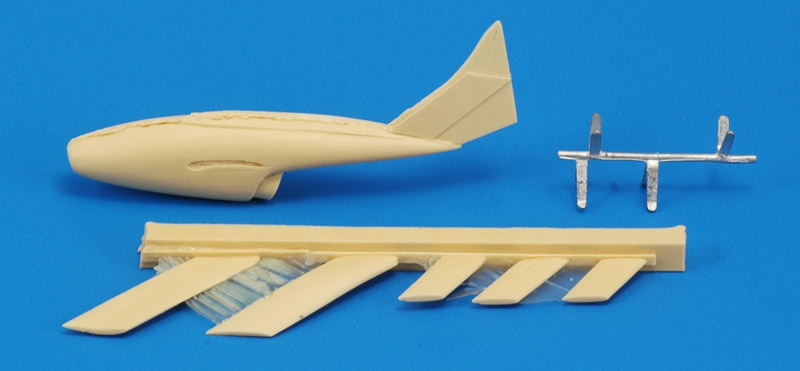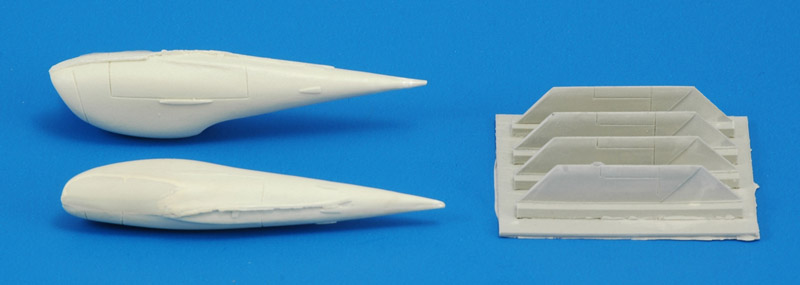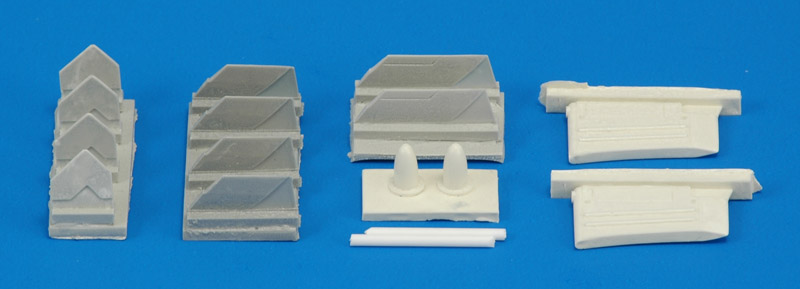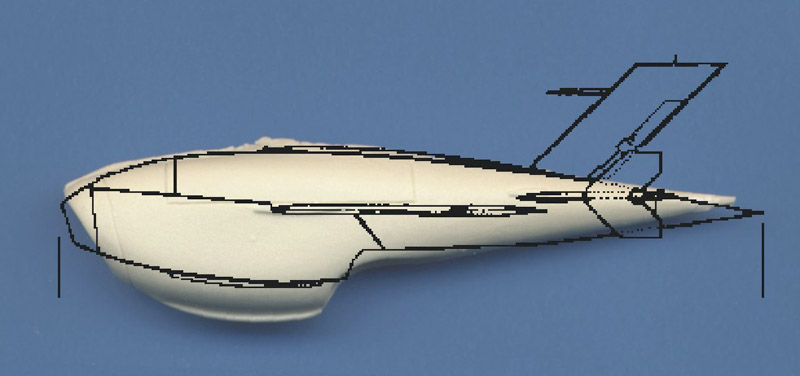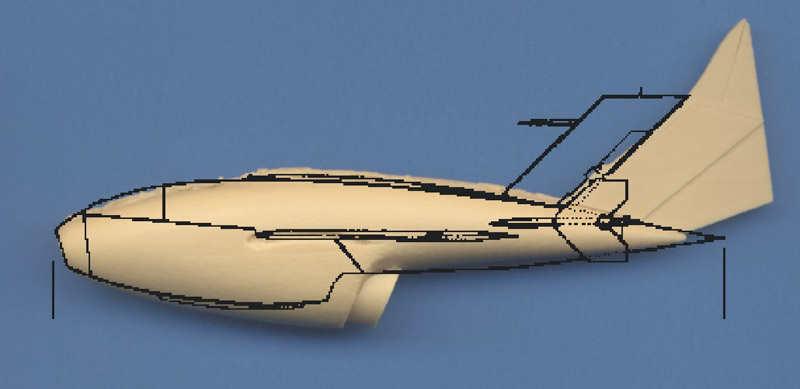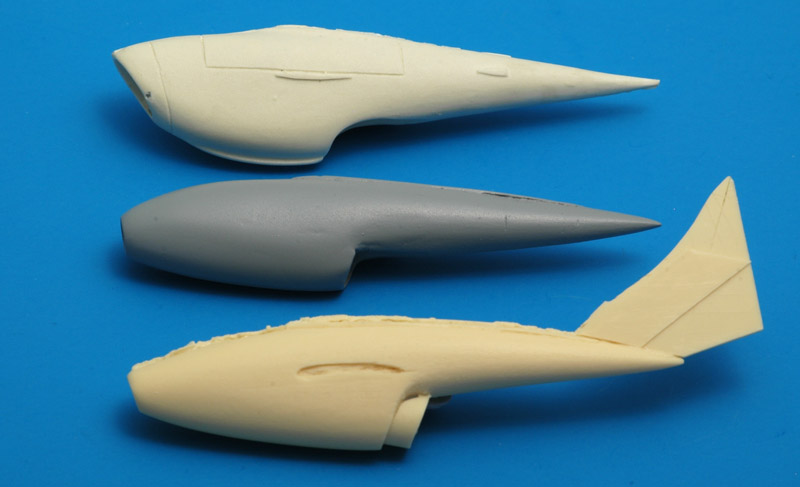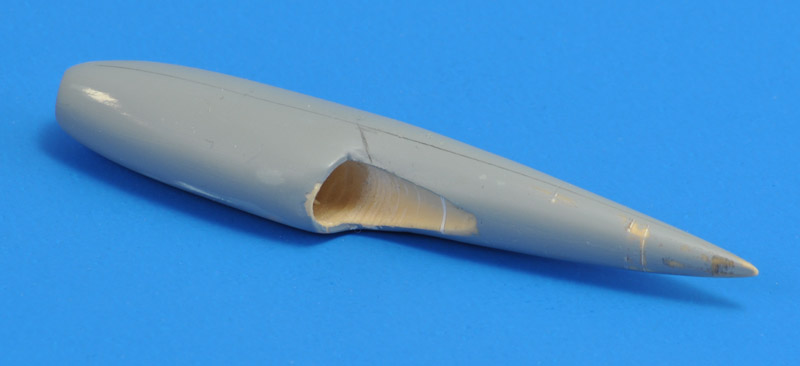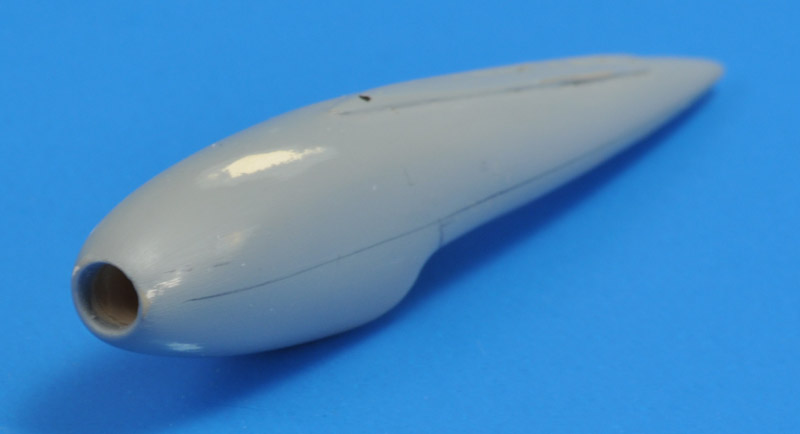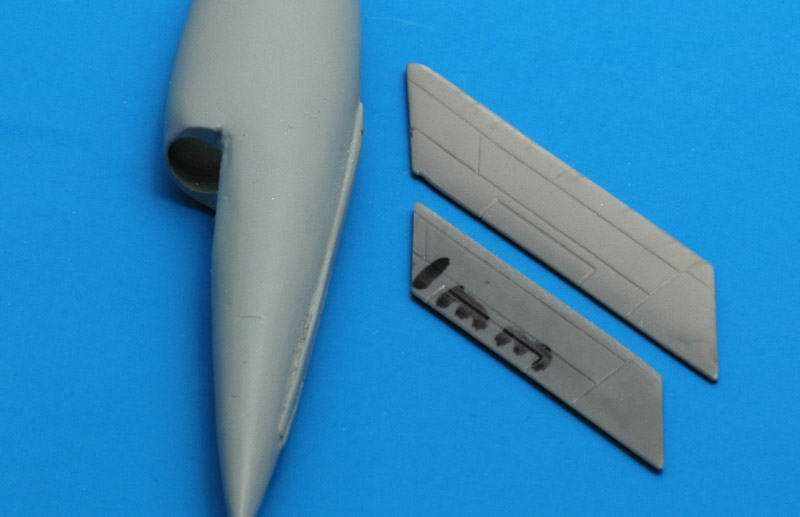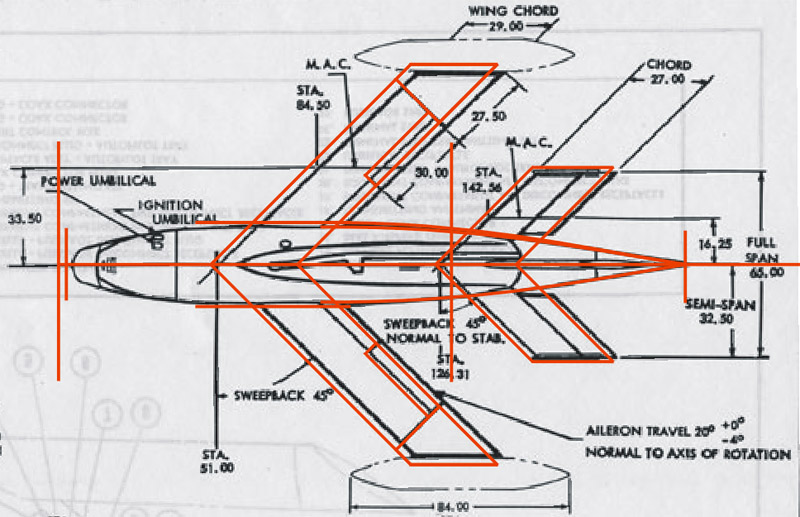Lone Star Models 1/72 Q-2A Firebee
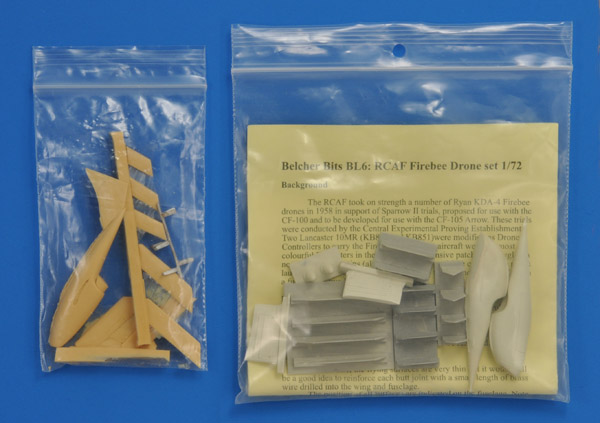
| I wanted to build the USAF version of the first-generation Firebee. Series production USAF Q-2As all had Continental J69 engines, series production Navy KDA-1s and KDA-4s all had Fairchild J44 engines. These two versions have very different nacelles and inlets. Two resin models exist: the Lone Star Models representing the USAF version, and the Belcher Bits representing the Navy version. I bought both to see which kit offered the best possibilities, and started work on the Lone Star Models kit.
The construction of this model was stopped in 2020, when PlusModel came out with a 1/72 KDA-1 Firebee model, that offered a much better basis for a conversion to a Q-2A Firebee. I also learned a lot more about the Q-2A shape in the mean time, so a fresh start was nice. |
